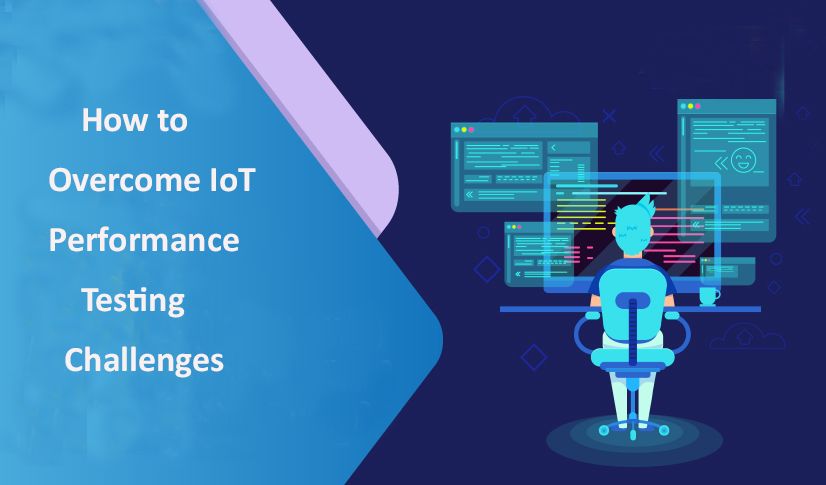How to Overcome IoT Performance Testing Challenges
Most establishments utilize applications that interact with human users that have decades of experience in testing them. Organizations must regulate their testing process to manage applications that communicate with things, such as IoT sensors and smart thermostats etc. Developers can determine some concerns during IoT performance testing procedures, but there are few other issues they can only address suitably, during the IoT application design.
With new developments in device-to-device or device-to-server communications, Performance Testing tools are evolving to add accurate protocols & techniques in their test suites to verify the IoT system performance characteristics.
As per McKinsey Global Institute, IoT technologies will affect economy by $6.2 trillion by the year 2025. This clearly indicates that there will be a great demand for the way these smart devices can support various industrial sectors & in order to manage with this demand, there requires being huge change assumed in development & testing methodologies too.
Top 5 considerations in IoT Performance Test Strategy
Performance Testers requires to be familiar with new dimensions initiated by IoT applications that are not available in web and mobile applications. The IoT application performance test strategy should concentrate on below referred areas:
- User Interface Performance Tests
- Network Performance Tests
- Internal Processing Performance Tests
- Longevity tests
- High Data Volumes Tests
Here are the Top 10 Challenges Overlooked during IoT Performance Testing
- Selecting right performance testing tool
- Diversified Device Interfaces
- No Standardization for Devices & its performance estimation techniques
- Realistic Workload Model formation
- Large investment in tool license cost for cloud based load generation
- Need for long duration endurance tests to validate stability
- Need for Sophisticated Network simulation tools
- Test Data Management strategies for generating huge data volumes
- Complexities included in setting up a dedicated Performance Test Environment
- Need for investments in custom tool / utility evolution.
IoT Performance Testing: How to approach it?
A smart approach to dealing with such challenges is by prioritizing test cases. As testers are not required to test everything from the root origin, it is best to recognize key areas that are assumed to take the longest testing time. Once you understand which devices and operating systems need to test, you can focus most of your testing on these sequences and run smaller intelligence tests on limited common combinations. Performance Concerns in few business operations are not likely to harm a brand’s reputation or revenue, but in other way they might have destructive results. This can be demonstrated by exploring two different scenarios.
Take the example of an electric heater. An application could be constructed into the heater to continuously give the server with essential data on its different characteristics (Such as a heating performance, temperature, power consumption, etc.) to give a brief insights of its service life and performance over time. If at specific point, the server fails to obtain data bits, it does not impact your business in any form. But, if you consider the case of an assembly line for a major industry where each machine is communicating with the other, data loss at any point could cause massive delays in the production line and therefore directly affect the businesses ROI stream negatively.
For the following case, performance testing is critical. Ensuring machines can manage any given load and messages are moved across in real time should be the primary focus of the testers. One should also be capable to calculate response times between various network layers and trace device system statistics.
IoT Performance Testing Tool Choice
The IoT Performance Testing tools that says to have support for IoT protocols requires to contain at least the key protocols like REST API over HTTP, MQTT & CoAP. If the IoT application under test, utilizes only REST APIs over HTTP for communication, then performance testing tool which help this protocol would be enough.
There are many commercial testing tool providers who declare that they support IoT system performance testing if they provide REST API over HTTP protocol testing features. So, the selection of the performance testing tool should be depends on its support for IoT protocol utilized by IoT application under test.
Various performance testing tools like Apica, Neoload, etc state their support for IoT protocols. Not all IoT applications are constructed on new set of IoT protocols that are different from web & mobile applications.
Apply Good Design Practices
IoT Device testing is a complex process start from it’s designing procedure. Most IoT explorer has learned that if IoT applications need to be customized for every new device, device introduction will be a crucial problem, probably intruded with errors. The solution to device testing is to first design the application to abstract devices by class.
That means motion or temperature sensors should introduce an ordinary interface to the rest of the application. Modify each specific device to that common abstraction. This restricts device testing to testing a device against that class-specific standard.
IoT App, Device Diversity Challenge
Testers must have a powerful test strategy, have a good recognition of the architecture and they must assure that the devices and software under test are always assigned with the exact version. If the system relies on third-party services, tests may fail if that third-party service changes.
As there irr-regularities seen in IoT protocols used & due to the diversity of devices in IoT platform, performance testing tool vendors also have challenges. But still there are diverse work around that are currently utilized to carry out performance analysis in bits & pieces to estimate the IoT application performance.
A careful and strategic approach to expanding and implementing an IoT testing plan is the most effective way of assuring an application’s performance. With the utilization approach explained above while performance testing, combining IoT in your business processes will surely enable your enterprise to thrive.

